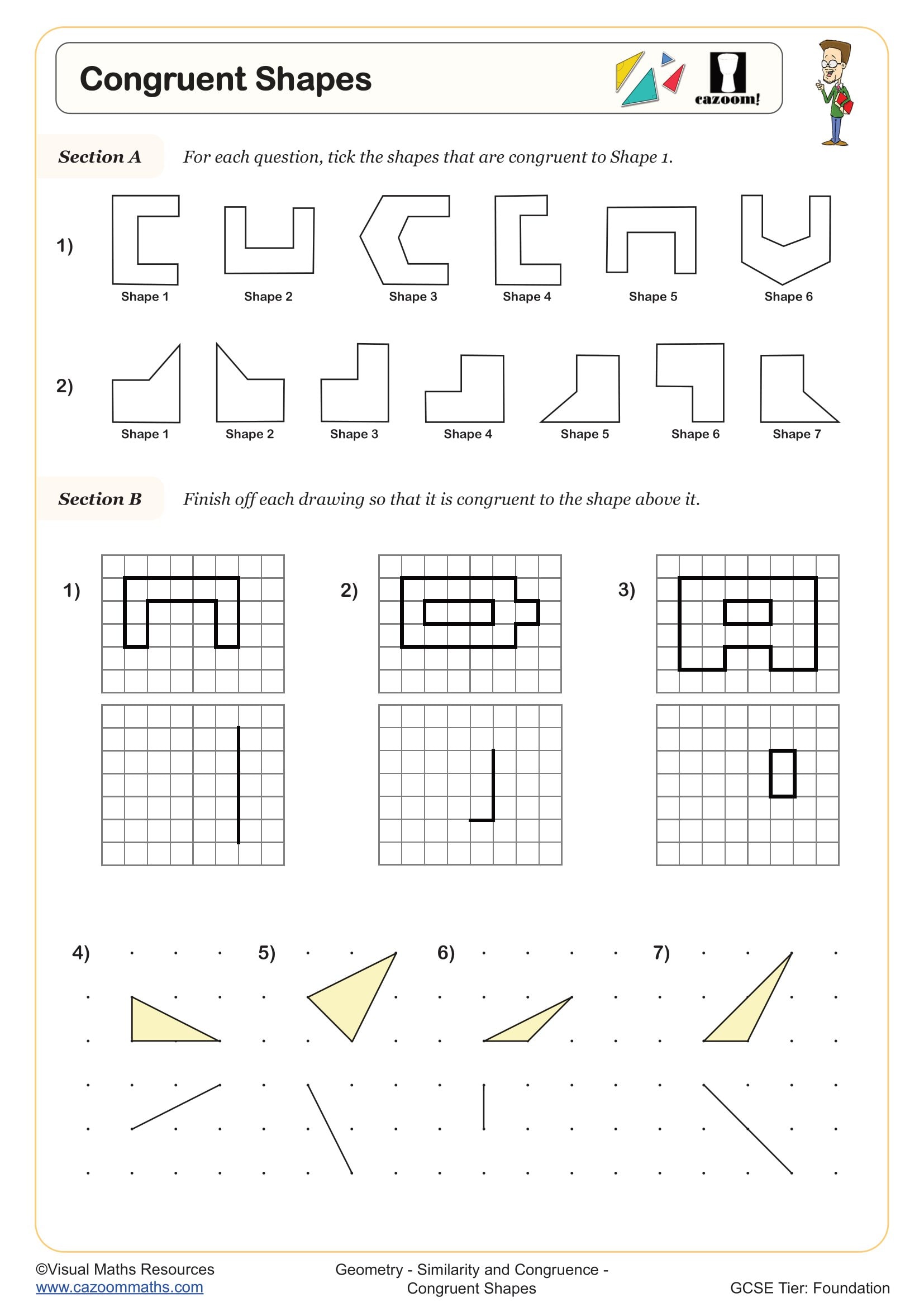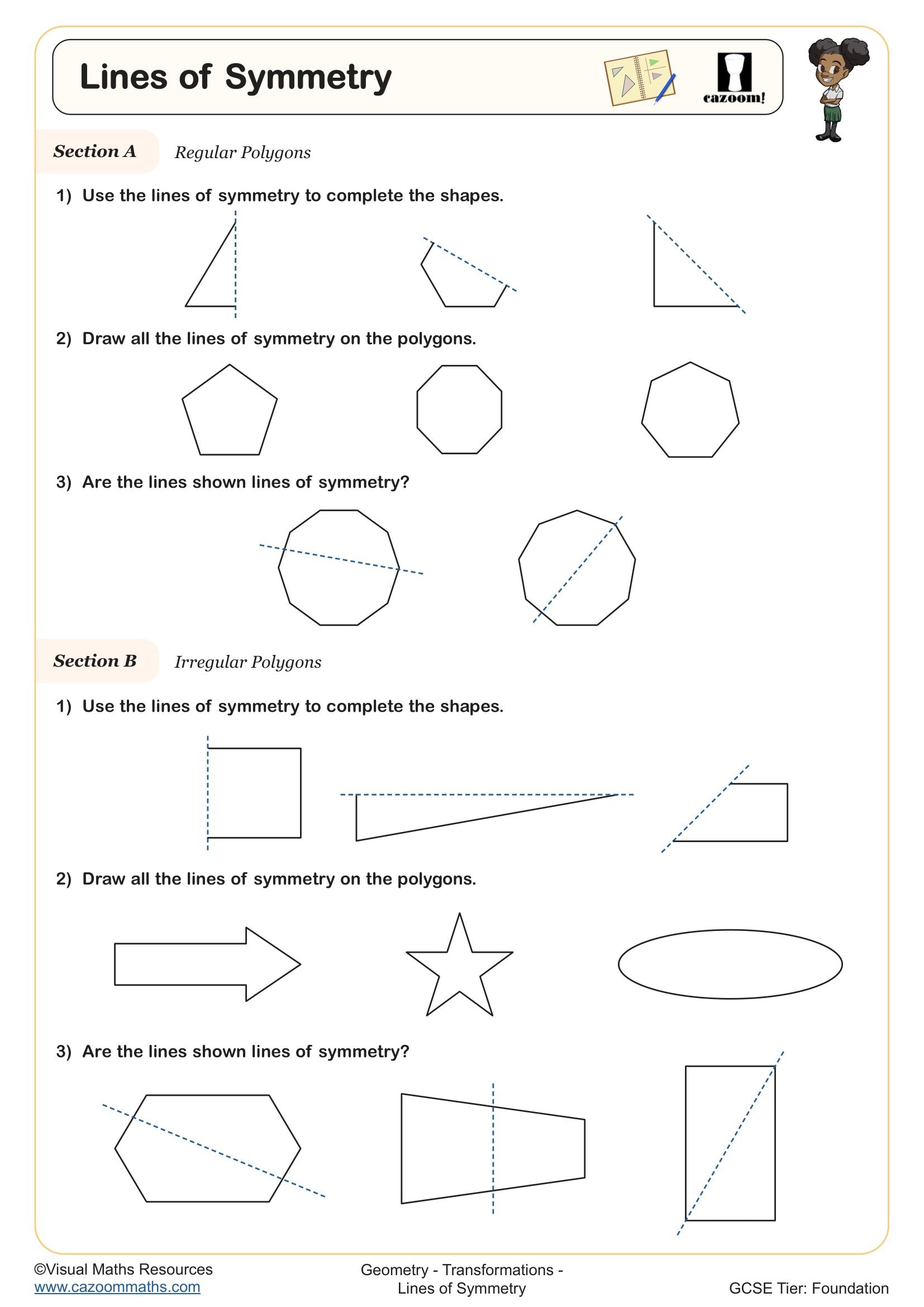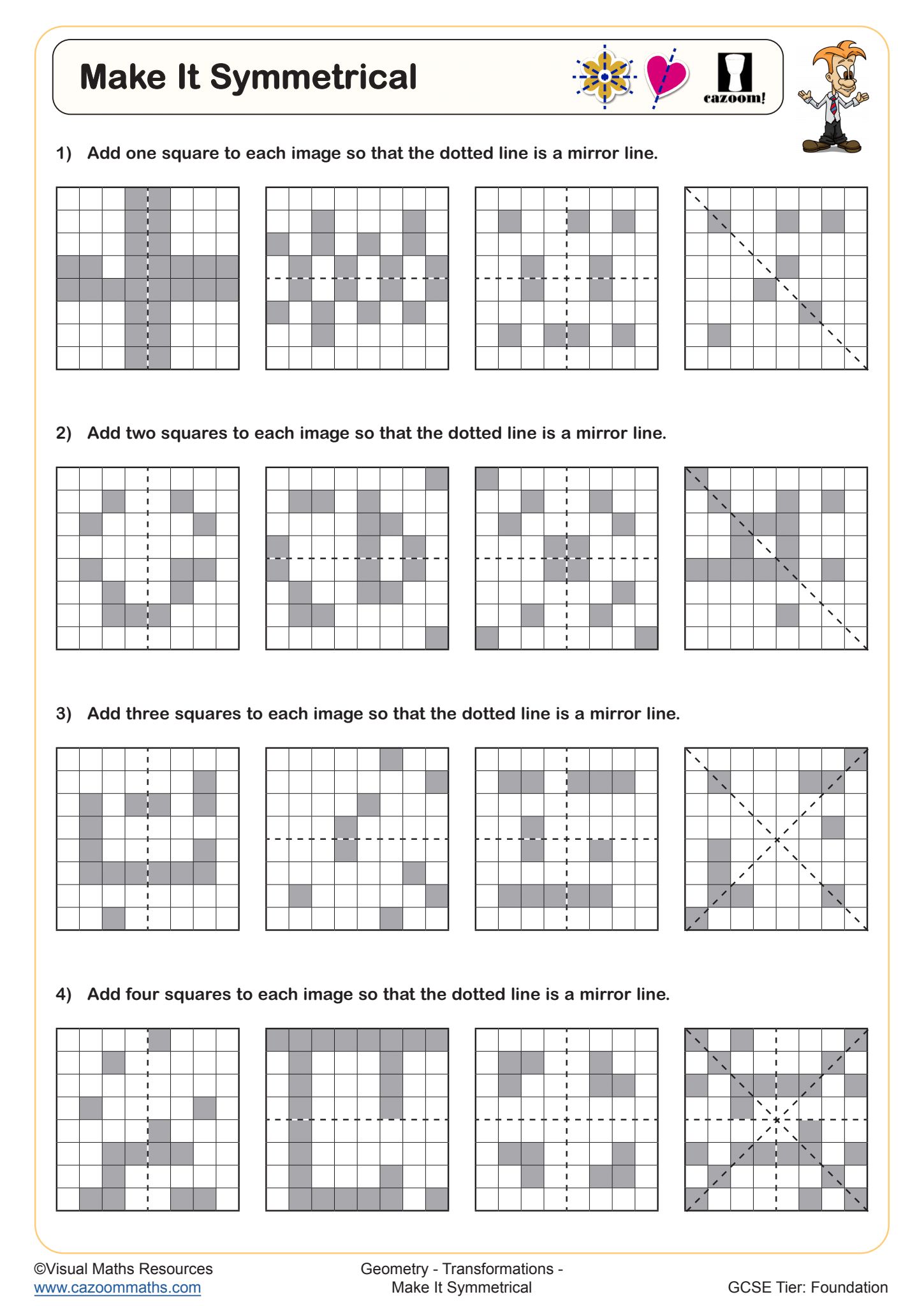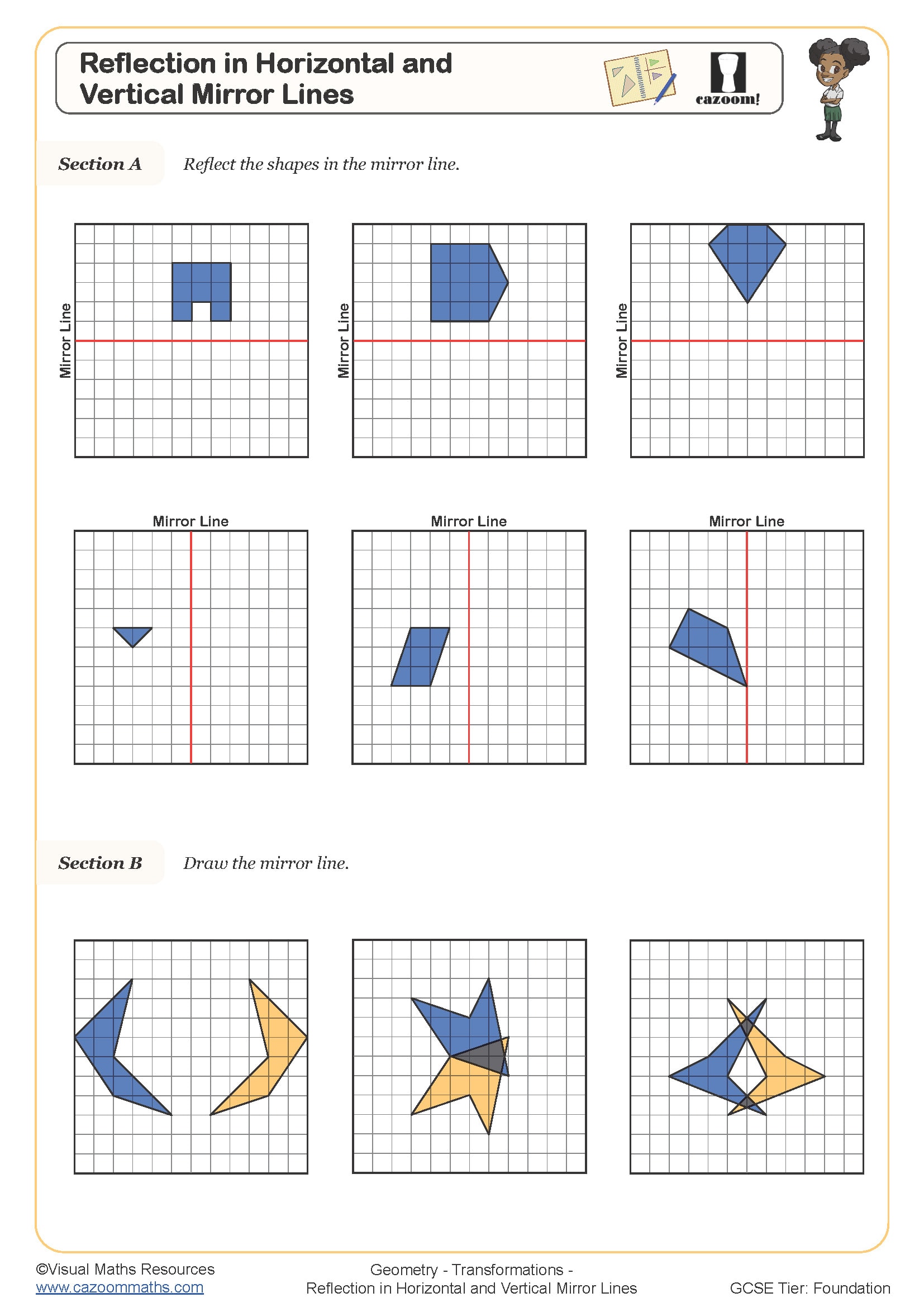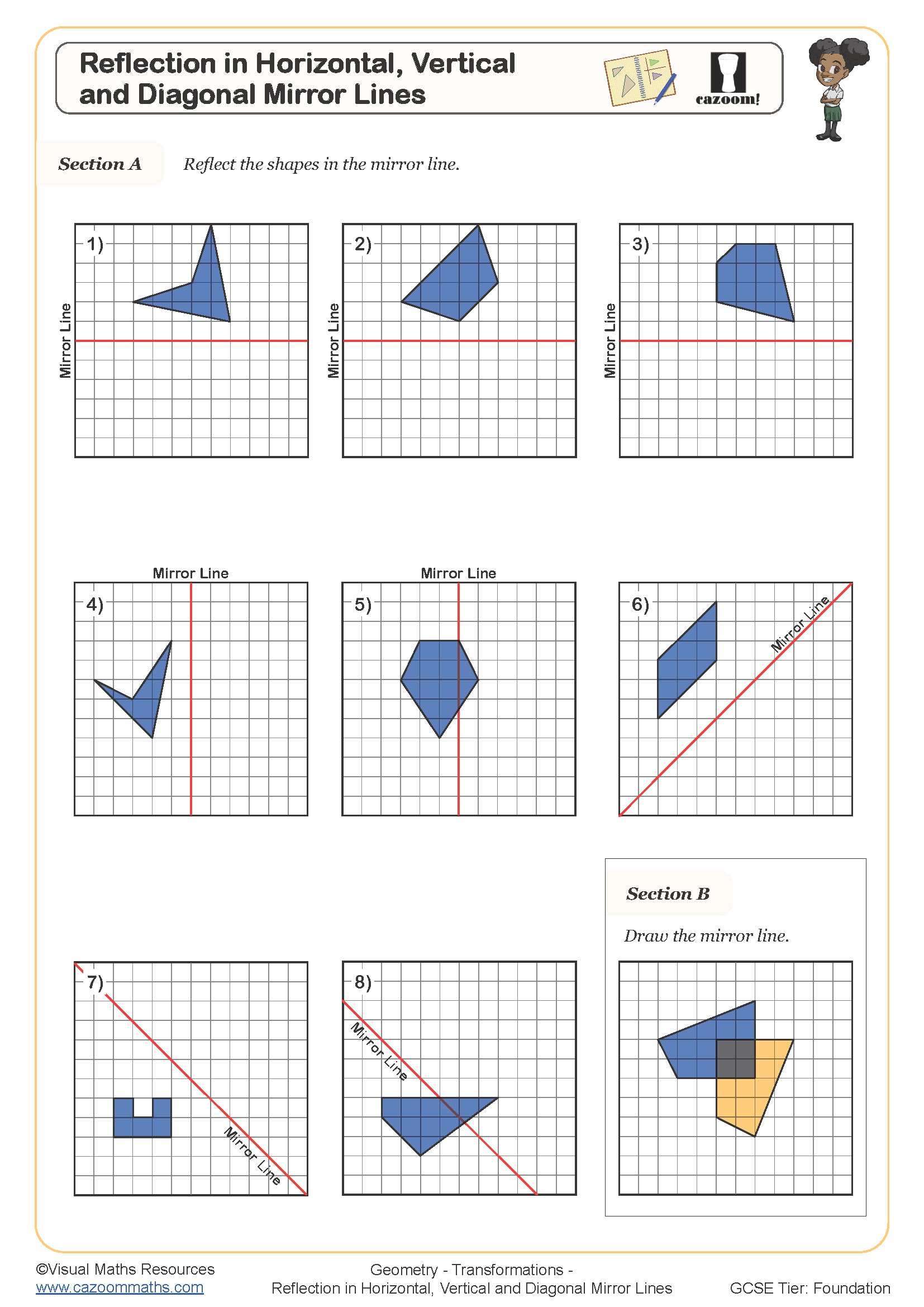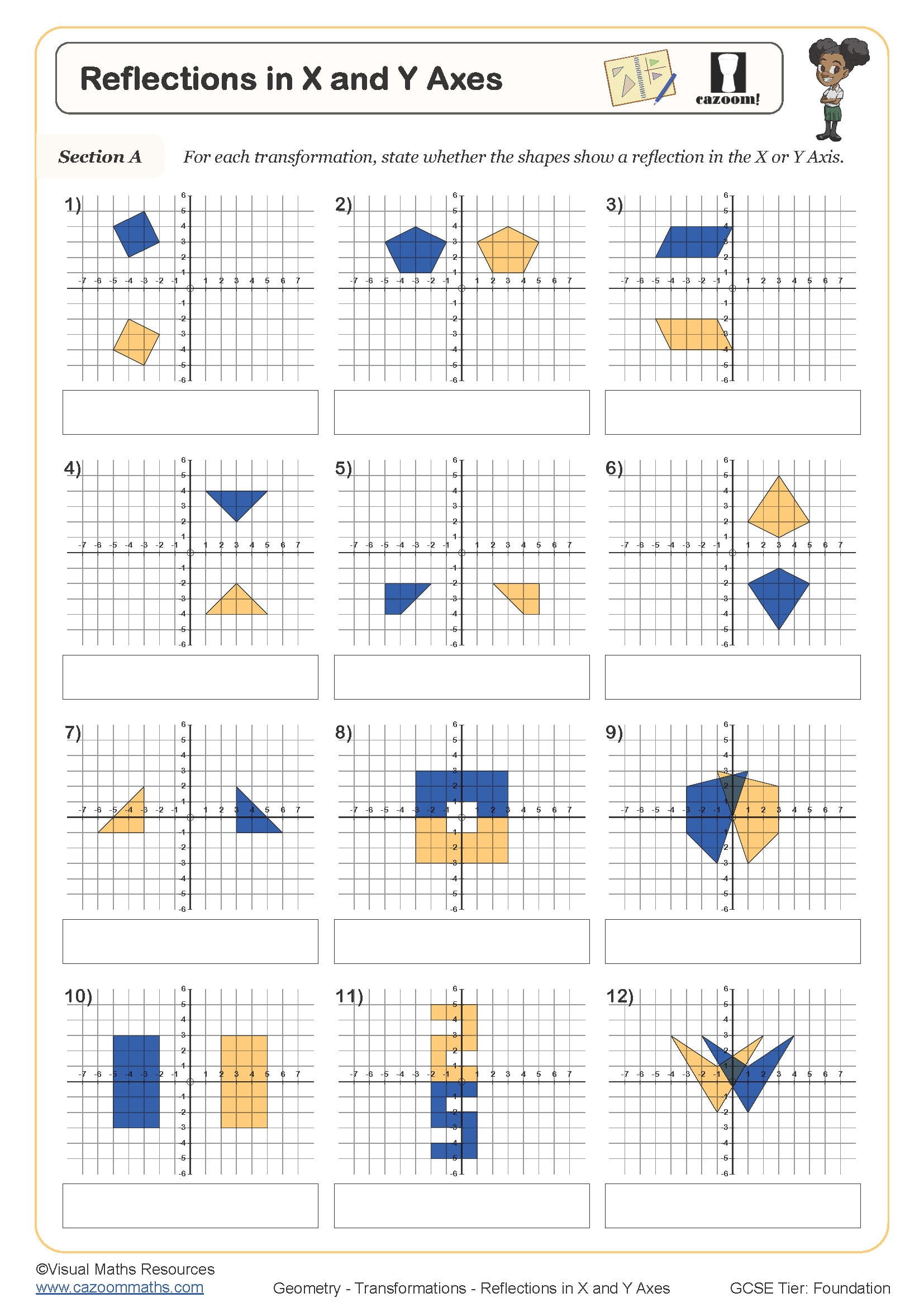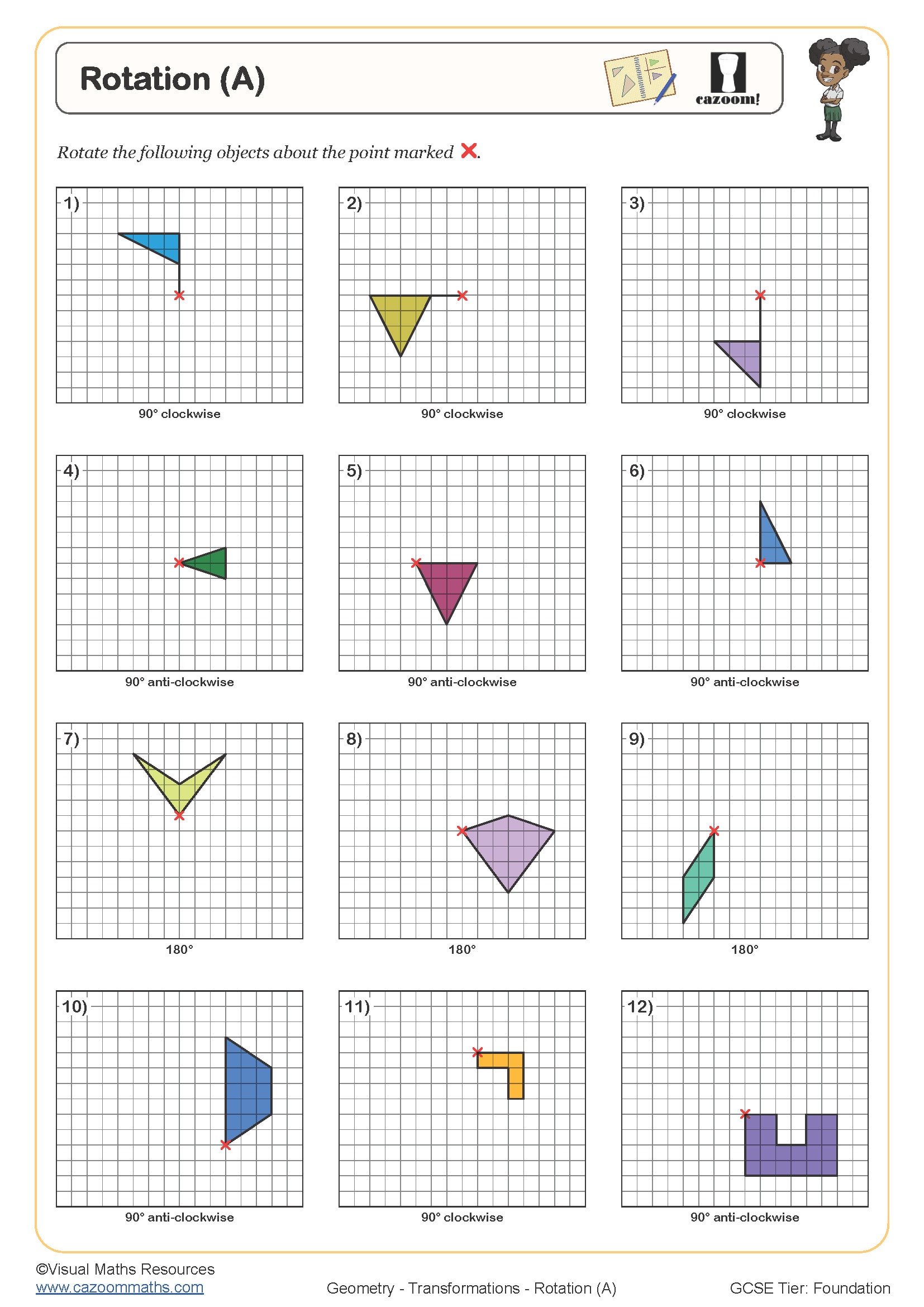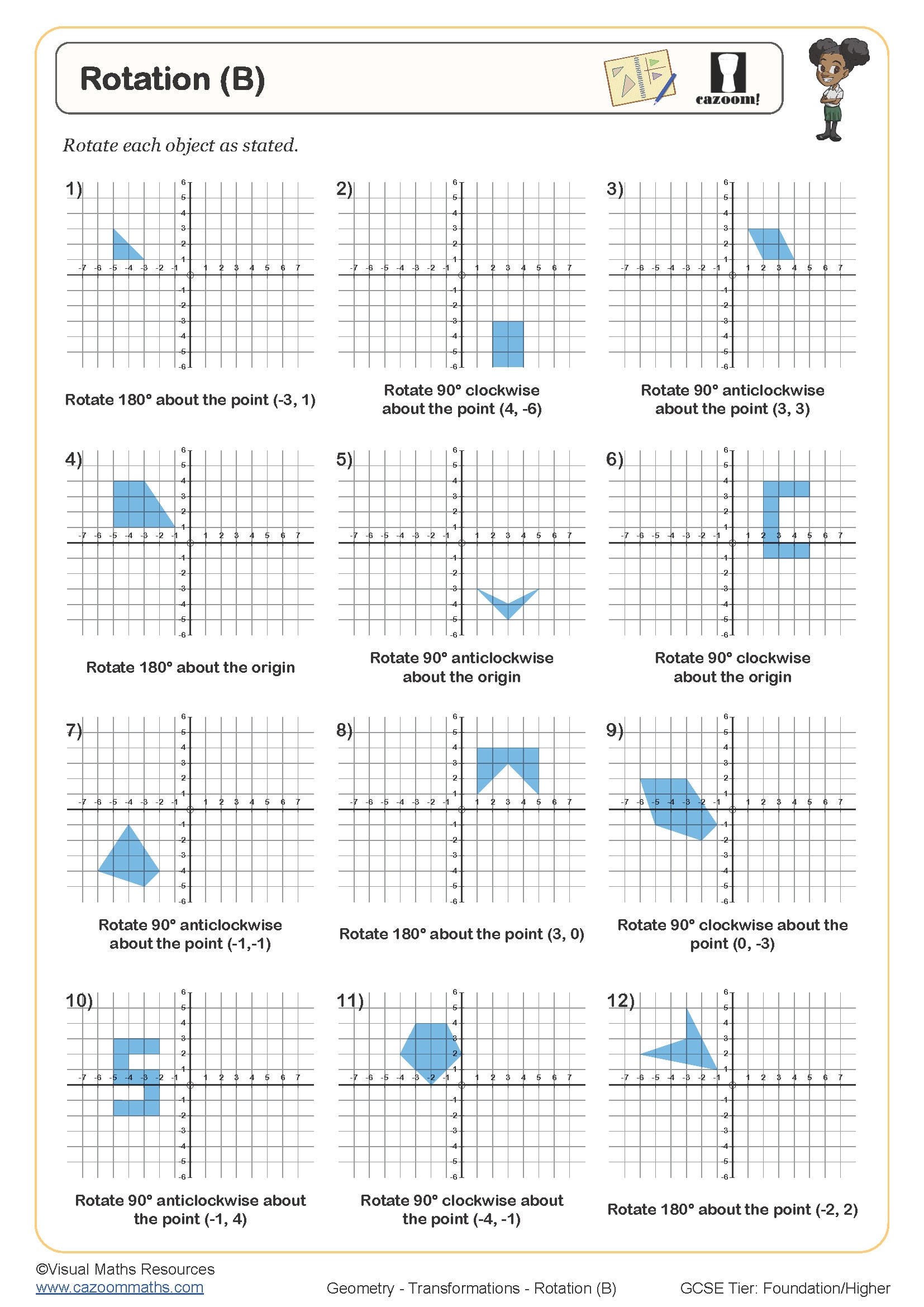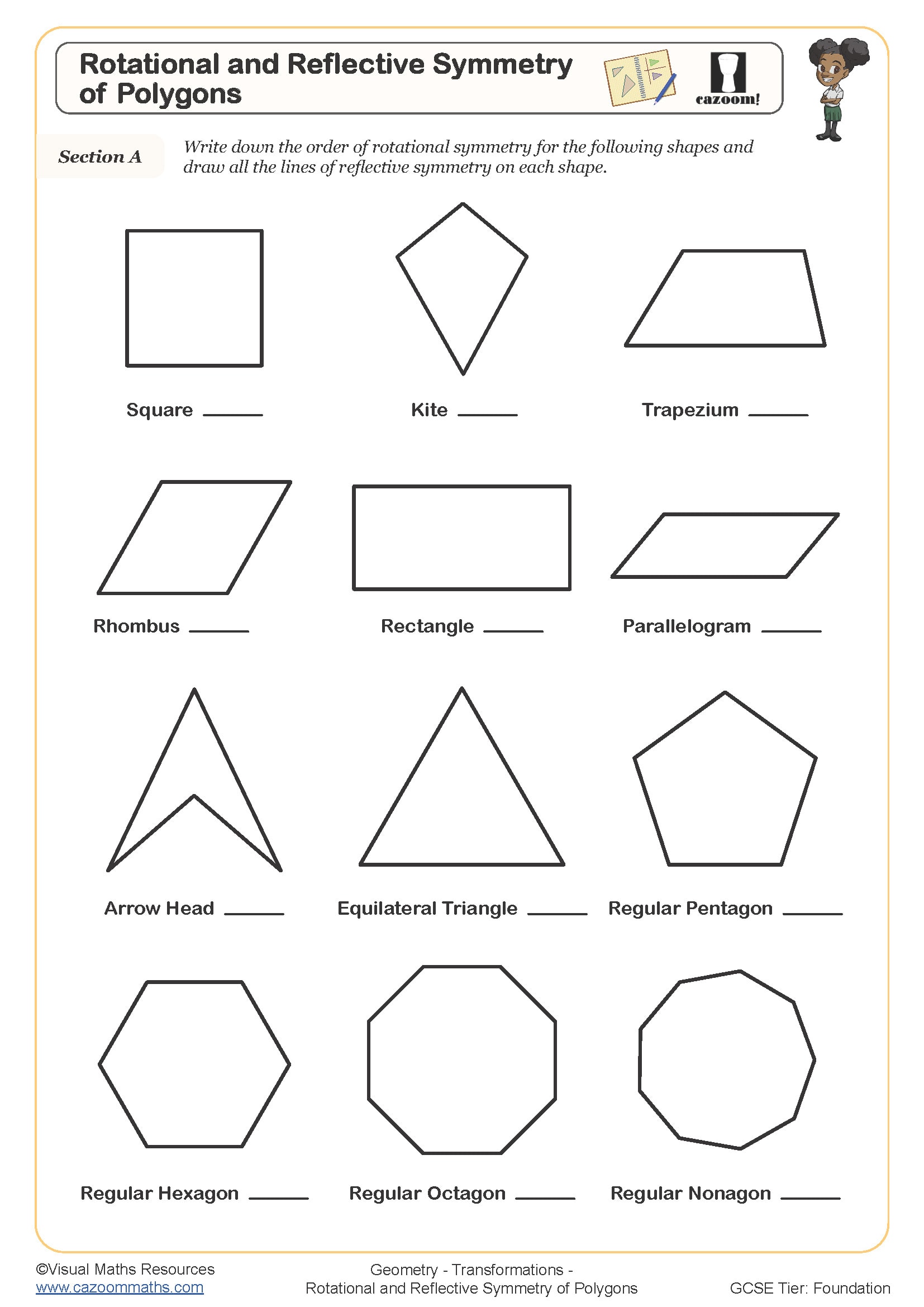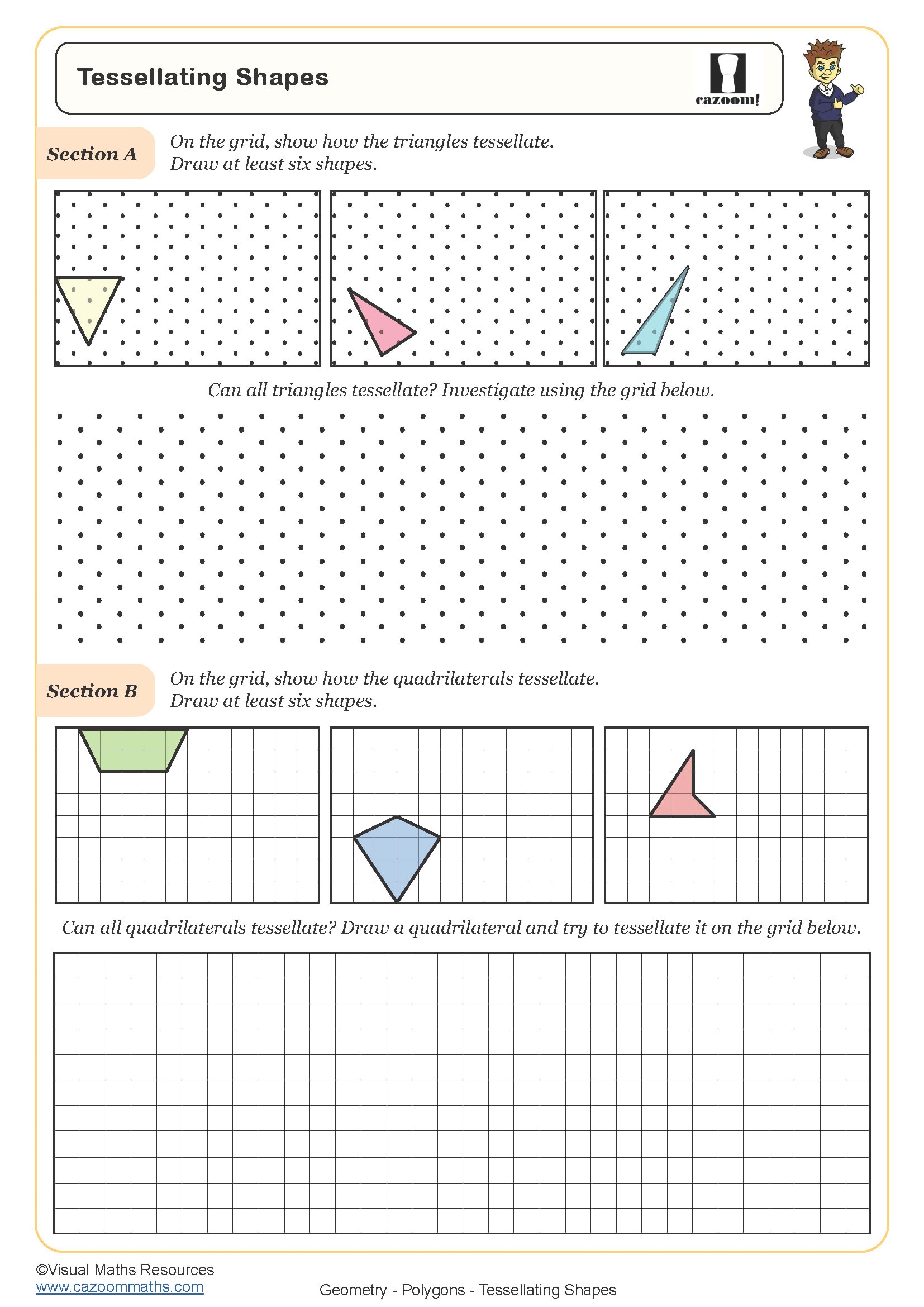Year 7 Geometry Worksheets
Year 7 Geometry Worksheets PDF Downloads with Step-by-Step Solutions
Each of our maths worksheets is created in ready-to-use, printable PDF format and targets specific geometry skills, such as coordinates, angles, circles, properties of shapes, and related concepts. The detailed solutions, which are included separately with each of our resources, clearly show every step. These resources make marking quick for maths facilitators and help your secondary school students understand their mistakes easily and effectively.
Essential Geometry Skills Covered in These Year 7 Worksheets
We have included a huge variety of secondary school geometry concepts. As a teacher, as well as parents, find activities covering different types of geometric concepts like quadrilaterals, triangles, circles, nets of 3D shapes, and practical measurement tasks that connect to real classroom situations.
We have covered important concepts like-
• 2D Shapes
• 3D Shapes
• Area and Perimeter
• Bearings, Scale, and Loci
• Circles
• Constructions
• Coordinates
• International Joke Day
• Lines and Angles
• Polygons
• Similarity and Congruence
• Transformations
• Units and Dimensions
• Volume and Surface Area
Why Year 7 Students Need Regular Geometry Practice Worksheets
We have noticed that KS3 pupils who master these core geometry skills early perform much better in later maths topics. Regular practice with these geometry questions builds mathematical confidence and improves their knowledge of shapes, their properties, and calculations related to those accurately. These worksheets work perfectly for homework, intervention sessions, or preparing for exams. They will be able to build and learn all the essential skills they need before starting secondary school. It is proven that your secondary school pupils who use these worksheets regularly perform better in their SATs and feel more confident about their GCSEs in the future. Cazoom Maths geometry resources help them understand different ways to tackle geometry maths problems, so that they feel comfortable with all types of maths questions.
Real-World Connections Where Students Apply Geometry Skills
Geometry skills pop up everywhere once you start noticing them. We love showing students how architects use these exact concepts, how video game designers rely on coordinate systems, and how even cooking involves area and volume calculations. It's actually quite satisfying when students start spotting geometric principles in their everyday world.
• Design Technology: Students design buildings and structures, learning how math helps create strong, beautiful architecture
• Geography: Kids practice reading maps and finding their way around, using coordinates and scales like real explorers
• Art: Students discover how shapes and patterns in nature connect to math, creating artwork based on geometric designs
• PE: Young athletes analyse sports moves - like figuring out the perfect angle for a basketball shot or soccer goal
• Food Technology: Students measure ingredients for cooking and baking, learning that math makes recipes work perfectly
• Computer Programming: Kids create games and write code, seeing how math powers the digital world around them
